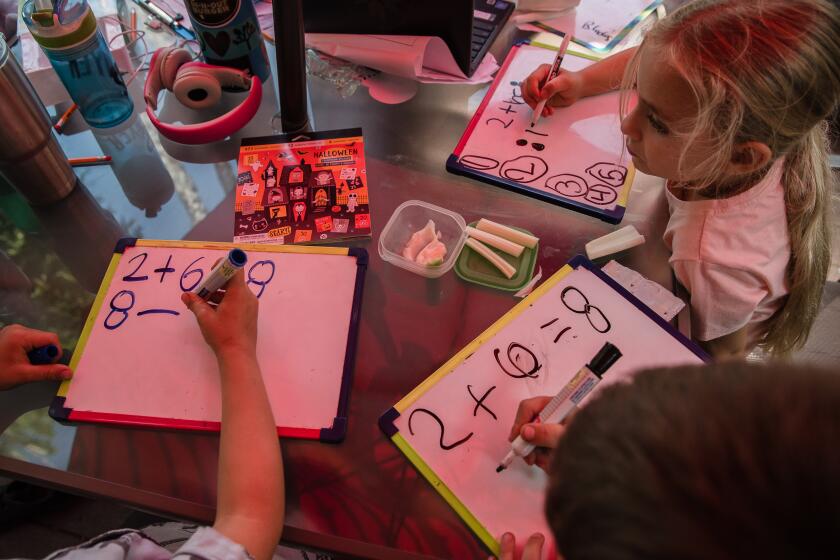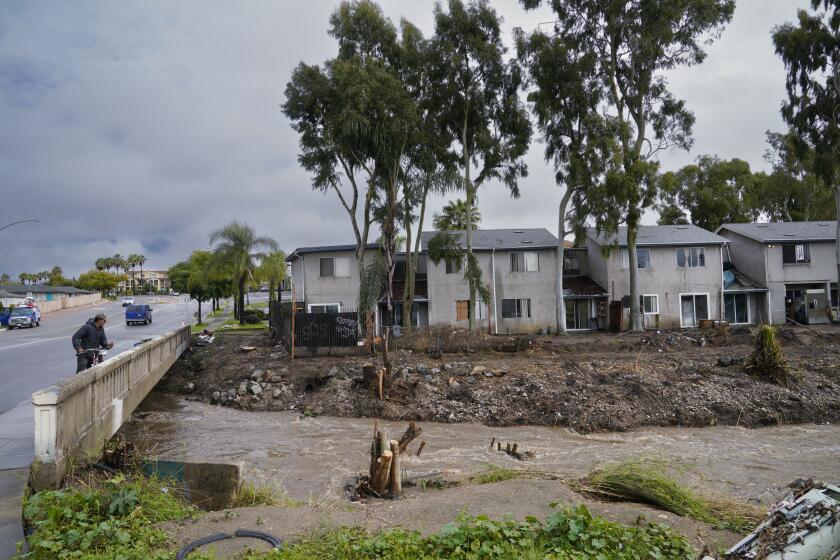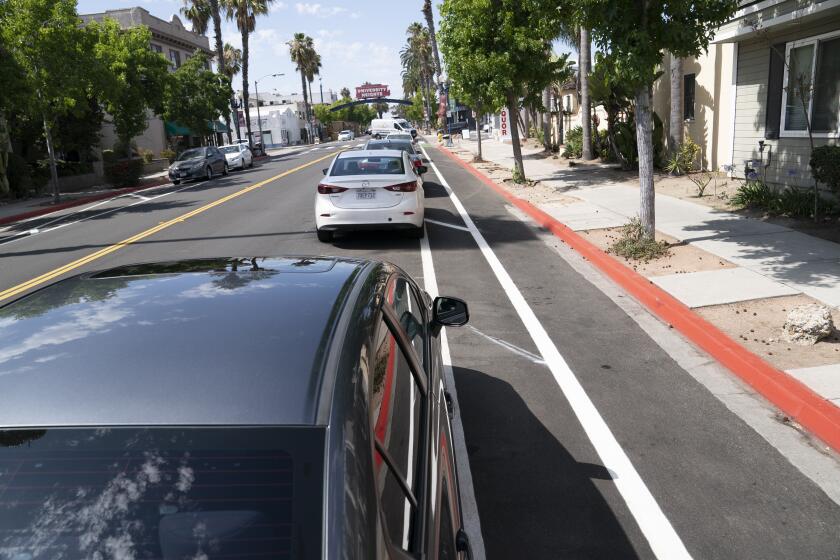Commentary: Why immigrant doctors are vital to California’s health care
State faces a shortage of doctors in primary care
I practice family medicine at a clinic a few miles from the school where I earned my medical degree. But the journey from medical school to practicing in Chula Vista was long — not least because the U.S.-Mexico border stood in the way.
My experience has taught me how vital immigrants are to California’s health care. It’s also shown me that immigrant physicians can play special roles in medical training and in places where doctors are needed most.
I was born in Monterrey, Mexico, but moved to Tijuana when I was young. Medical school in Mexico is a seven-year program that starts right after high school and provides extensive contact with patients. At the medical school at the Universidad Autonoma de Baja California, I encountered all sorts of people and medical problems. Mexican medicine is less dependent than American medicine on lab tests, so I became quite good at giving physical exams and talking with the people I treated.
In my 20s, I decided to immigrate to San Diego, as my family grew concerned about violence. I could move quickly because my mother is a U.S. citizen, originally from Texas.
At first, I didn’t think I’d be able to stay in California, earn a medical license and win a residency here. Such positions are very competitive. Then I had the good fortune to get into UCLA’s International Medical Graduate (IMG) program.
The IMG program solves two problems. Medical school graduates from Latin America find it difficult to make the transition to practicing here. And California faces a shortage of doctors in primary care. Many areas with physician shortages are Latino, but fewer than 10% of the state’s doctors are Latino.
So the IMG program prepares bilingual, bicultural immigrant medical school graduates who reside in the U.S. legally to earn a California medical license and obtain a residency in family medicine. In return, the program’s participants promise to practice in one of the state’s underserved communities for two to three years after their residency is over.
UCLA was great. The program didn’t just help prepare me for the licensing exams and score in the 99th percentile for U.S. students; it also introduced me to the culture of American medicine.
As part of a clerkship, I rotated through the UCLA hospital system. That, and my subsequent internship and residency in family medicine, came with surprises. For all the Latino patients I encountered, I didn’t encounter many Latino doctors. And I was shocked by all the resources and how quickly things happened: In Mexico, my patients had waited days and days to get CT scans.
After residency, I decided to practice family medicine at Family Health Centers of San Diego’s clinic in the City Heights neighborhood. Technically, this was a requirement of the program, but this was exactly the sort of place where I want to practice. I’ve since transferred to the Family Health Centers of San Diego clinic in Chula Vista.
My patients here remind me of the diverse working people I helped treat in Baja. And I’ve tried to use my experience on behalf of the community. I started a Spanish-language version of the diabetes group classes here. I often counsel patients who get assigned to specialists but struggle to communicate their needs. I’ve had a patient open up to me about rectal bleeding she was experiencing when she wouldn’t talk with other doctors.
My background sometimes allows me to advocate. I intervened on behalf of a patient who kept getting injections for an aching back and wouldn’t speak up despite the injections not working. I often remind patients that they have a right to have a translator when they are referred to a specialist. I’ve made some progress convincing mothers from Mexico, where baby formula is highly popular, of the virtues of breast milk.
In border communities, I’ve seen treatment become broader and more culturally sensitive because we have both physicians and patients who have migrated from so many different parts of the world. We screen people for a variety of diseases from around the globe, and are very attentive to the risks associated with hepatitis B and other infectious diseases.
When it comes to health care at least, the border isn’t much of a barrier anymore.
Green, M.D., practices family medicine at Chula Vista Family Health Center, one of Family Health Centers of San Diego’s 24 primary care clinics in the region. She serves as Family Health Centers of San Diego Residency Program Faculty, where she teaches medical residents. She wrote this for Zocalo Public Square, www.zocalopublicsquare.org
Get Weekend Opinion on Sundays and Reader Opinion on Mondays
Editorials, commentary and more delivered Sunday morning, and Reader Reaction on Mondays.
You may occasionally receive promotional content from the San Diego Union-Tribune.




